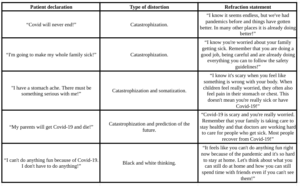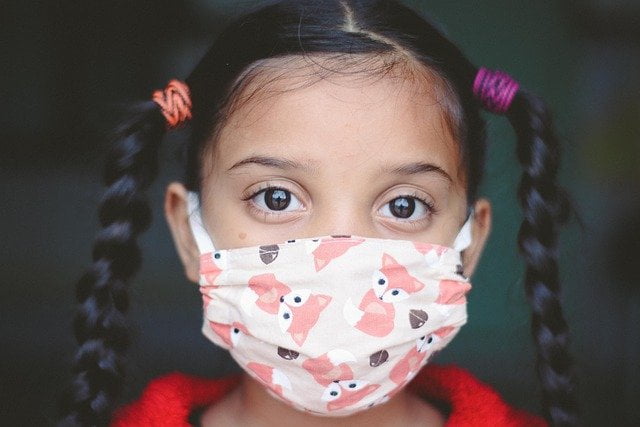Clinical Case Study: Single Session Therapy for the treatment of anxiety related to Covid-19 in a pediatric emergency department
The spread of Single Session Therapy throughout the world is now a certain fact, as evidence of this phenomenon are the multiple applications of the method in the various areas of mental health .
Through the exposition of a clinical case in which the three phases of a Single Session Cognitive Behavioral Therapy intervention in a pediatric setting are described for the treatment of anxiety related to the spread of Covid-19 (P Lee & Simpson, 2020), we really want to highlight the different ways in which the single session mindset is expressed, proving to be a fundamental resource for improving the quality of services and making them accessible to a larger population.
How can the Single Session mindset represent a resource in pediatric mental health?
Even before the Coronavirus (Covid-19) pandemic , visits to pediatric emergency departments had increased (Sheridan et al. 2015). Over half a million children (a significant portion of whom come from families in conditions of socio-economic disadvantage) were taken to psychiatric emergency rooms every year for mental health problems, of which almost half with symptoms attributable to an anxiety disorder . With the pandemic, this phenomenon has increased (Jiao et al . 2020) (e.g., children experience anxiety connected to the epidemic and the health of relatives, poor sleep, physical discomfort, agitation and separation anxiety) and with it the need to provide a more effective response in order to reduce further psychiatric emergency admissions in general (P Lee & Simpson, 2020).
Clinical case.
A 10-year-old American Indian girl arrives at the pediatric emergency room accompanied by her mother, presenting with chest pain, abdominal pain, nausea and decreased appetite for a few weeks. She had no significant medical or psychiatric history. Her vital signs and laboratory tests were reassuring. At the time of the initial evaluation, the child’s mother expressed concern about her daughter’s anxiety and discomfort related to the Covid-19 epidemic.
The team offers the family a visit with the service’s specialized behavioral health counselor. The mother reports to the counselor that the Covid-19 pandemic had been difficult. The child felt “down” and she experienced increased irritability, loss of pleasure (anhedonia), tearfulness, racing thoughts, and worry. The child reported struggling with social isolation and not being able to see her friends, who she previously saw at school. Additionally, the little girl was worried that her family members might contract the coronavirus; two of her brothers had poor health. She also feared that her abdominal pain was an indication of a serious health problem. The little patient had not reported suicidal thoughts or substance use.
The behavioral health counselor began a brief three-phase cognitive behavioral therapy (CBT)
intervention .
First Phase (Psychoeducation).
First, psychoeducation was provided on how common patient concerns are amid the pandemic and how somatic complaints are a frequent manifestation of anxiety. The patient along with her mother and doctor identified goals to improve anxiety and find ways for the child to be more active despite physical distancing and quarantine restrictions.
Second Phase (CopingSkills).
Coping skills and training were provided so that the patient could manage episodes of anxiety and pain. During this teaching, the clinician identified cognitive distortions in the patient’s thinking and emphasized precautions the family was taking to stay healthy, thus challenging the child’s catastrophic thinking that she needed to do more to protect her family.
Third Phase (Behavioral Activation).
Finally, the counselor reframed the patient’s thoughts about not being able to engage in positive activities given the restrictions, reminding her that she still had many options available to her to engage in preferred activities. To encourage healthy behaviors, the family was encouraged to maintain routines during the day and facilitate social connections despite physical distancing. The work on the medical aspects was reassuring as other diagnoses such as viral disease, appendicitis and chest pain with cardiac etiology were assessed as unlikely. Upon discharge from the psychiatric emergency room following this brief CBT intervention , the patient reported significant reductions in her anxiety level and somatic symptoms. Furthermore, the family felt reassured and motivated to reinforce the discussed treatment plan. In the six months following this visit, the patient never returned to the emergency room
We see in Table 1 some examples of interventions on thought distortions in relation to Covid-19 (P Lee & Simpson, 2020) .
Table 1

Conclusions
As noted, already before the pandemic, visits to psychiatric emergency departments, including visits for the somatization of anxiety, were common, of these visits almost half were repeated pediatric visits, which reflects on the lack of training and protocols for evidence-based treatments in the pediatric emergency context (Leon et al ., 2017). The illustrated case also highlights how brief evidence-based interventions such as Single Session Therapy can be particularly effective in reducing anxiety related to Covid-19 and suitable to be administered in the context of a medical visit by part of pediatric healthcare workers (Schleider, Weisz 2017).
Angelica Giannetti
Psychologist, Psychotherapist
Team of the Italian Center
for Single Session Therapy
Bibliography.
Cannistrà, F., & Piccirilli, F. (2018). Single Session Therapy: Principles and Practices . Giunti Editore.
P Lee, D. & Simpson, S.A., (2020). A Three-Step, Single Session Therapy Intervention for COVID-Related Anxiety in a Pediatric Emergency Department, Cureus , 12(12): 12371.
Sheridan DC, Spiro DM, Fu R, et al. (2015). Mental health utilization in a pediatric emergency department. Pediatr Emerg Care , 31:555–559.
Jiao WY, Wang LN, Liu J, Fang SF, Jiao FY, Pettoello-Mantovani M, Somekh E. (2020). Behavioral and emotional disorders in children during the COVID-19 epidemic. J Pediatr , 221:264–266.
Leon SL, Cloutier P, Polihronis C, Zemek R, Newton AS, Gray C, Cappelli M. (2017). Child and adolescent mental health repeat visits to the emergency department: a systematic review, Hosp Pediatr , 7:177–186.
Schleider JL, Weisz JR (2017). Little treatments, promising effects? meta-analysis of single-session interventions for youth psychiatric problems. J Am Acad Child Adolesc Psychiatry , 56:107–115.
